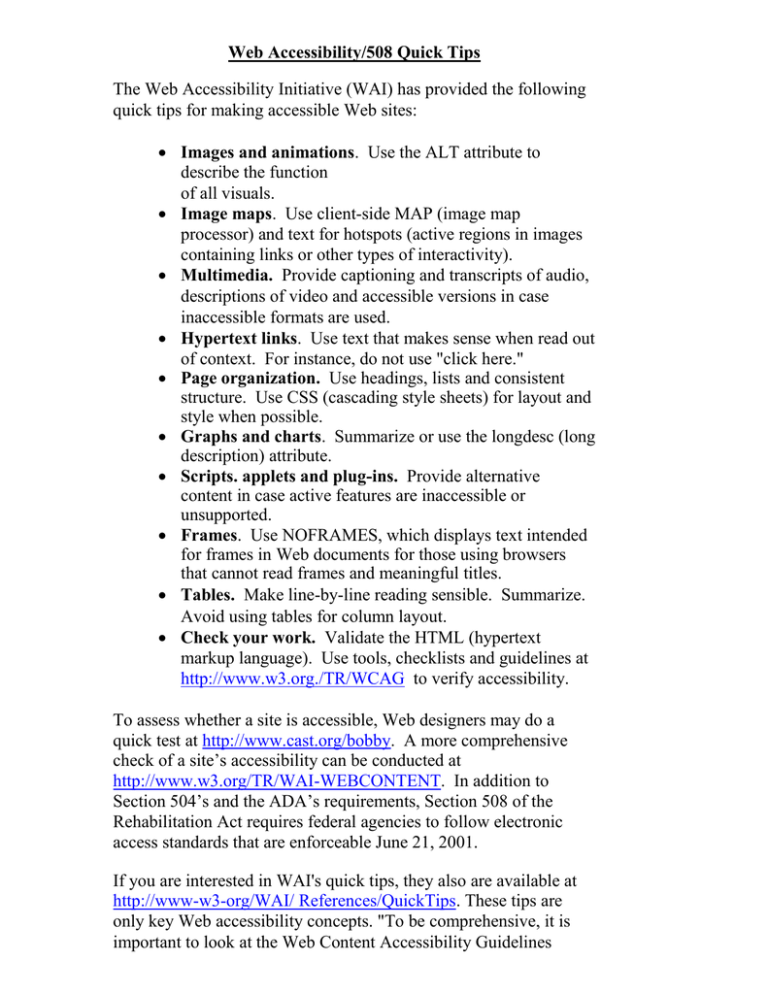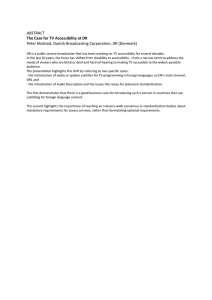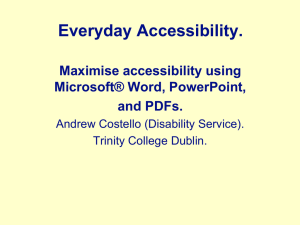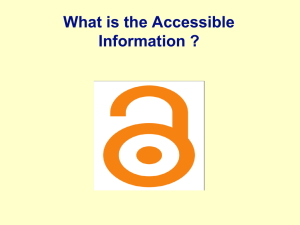Web Accessibility/508 Quick Tips quick tips for making accessible Web sites:
advertisement

Web Accessibility/508 Quick Tips The Web Accessibility Initiative (WAI) has provided the following quick tips for making accessible Web sites: Images and animations. Use the ALT attribute to describe the function of all visuals. Image maps. Use client-side MAP (image map processor) and text for hotspots (active regions in images containing links or other types of interactivity). Multimedia. Provide captioning and transcripts of audio, descriptions of video and accessible versions in case inaccessible formats are used. Hypertext links. Use text that makes sense when read out of context. For instance, do not use "click here." Page organization. Use headings, lists and consistent structure. Use CSS (cascading style sheets) for layout and style when possible. Graphs and charts. Summarize or use the longdesc (long description) attribute. Scripts. applets and plug-ins. Provide alternative content in case active features are inaccessible or unsupported. Frames. Use NOFRAMES, which displays text intended for frames in Web documents for those using browsers that cannot read frames and meaningful titles. Tables. Make line-by-line reading sensible. Summarize. Avoid using tables for column layout. Check your work. Validate the HTML (hypertext markup language). Use tools, checklists and guidelines at http://www.w3.org./TR/WCAG to verify accessibility. To assess whether a site is accessible, Web designers may do a quick test at http://www.cast.org/bobby. A more comprehensive check of a site’s accessibility can be conducted at http://www.w3.org/TR/WAI-WEBCONTENT. In addition to Section 504’s and the ADA’s requirements, Section 508 of the Rehabilitation Act requires federal agencies to follow electronic access standards that are enforceable June 21, 2001. If you are interested in WAI's quick tips, they also are available at http://www-w3-org/WAI/ References/QuickTips. These tips are only key Web accessibility concepts. "To be comprehensive, it is important to look at the Web Content Accessibility Guidelines themselves," said Judy Brewer, director of the Web Accessibility Initiative.



